What is a Volunteer Cover Letter
A volunteer cover letter is a concise document you submit with your application to volunteer for a specific organization or opportunity. It serves as an introduction to your skills, experiences, and motivations for wanting to volunteer. Unlike a resume, which provides a detailed overview of your background, the cover letter allows you to personalize your application, demonstrating your genuine interest and enthusiasm for the role. It showcases your personality, explaining why you are the ideal candidate, emphasizing your commitment to the cause, and highlighting how your abilities align with the organization’s needs. A well-written volunteer cover letter is a powerful tool for making a positive first impression and increasing your chances of being selected.
Why You Need a Volunteer Cover Letter
Even though it’s for a volunteer position, a cover letter remains crucial. It demonstrates your professionalism and commitment. By submitting a well-crafted cover letter, you show that you are taking the application process seriously. It offers you a chance to express your motivations, describe your skills, and show why you are a great fit for the volunteer opportunity. It allows you to connect your skills and experiences to the specific needs of the organization, showcasing your value beyond what a resume can provide. It provides a space to personalize your application and express your enthusiasm for the cause. Additionally, the cover letter gives you the opportunity to highlight any relevant experiences or skills that align with the organization’s mission.
Crafting a Compelling Volunteer Cover Letter
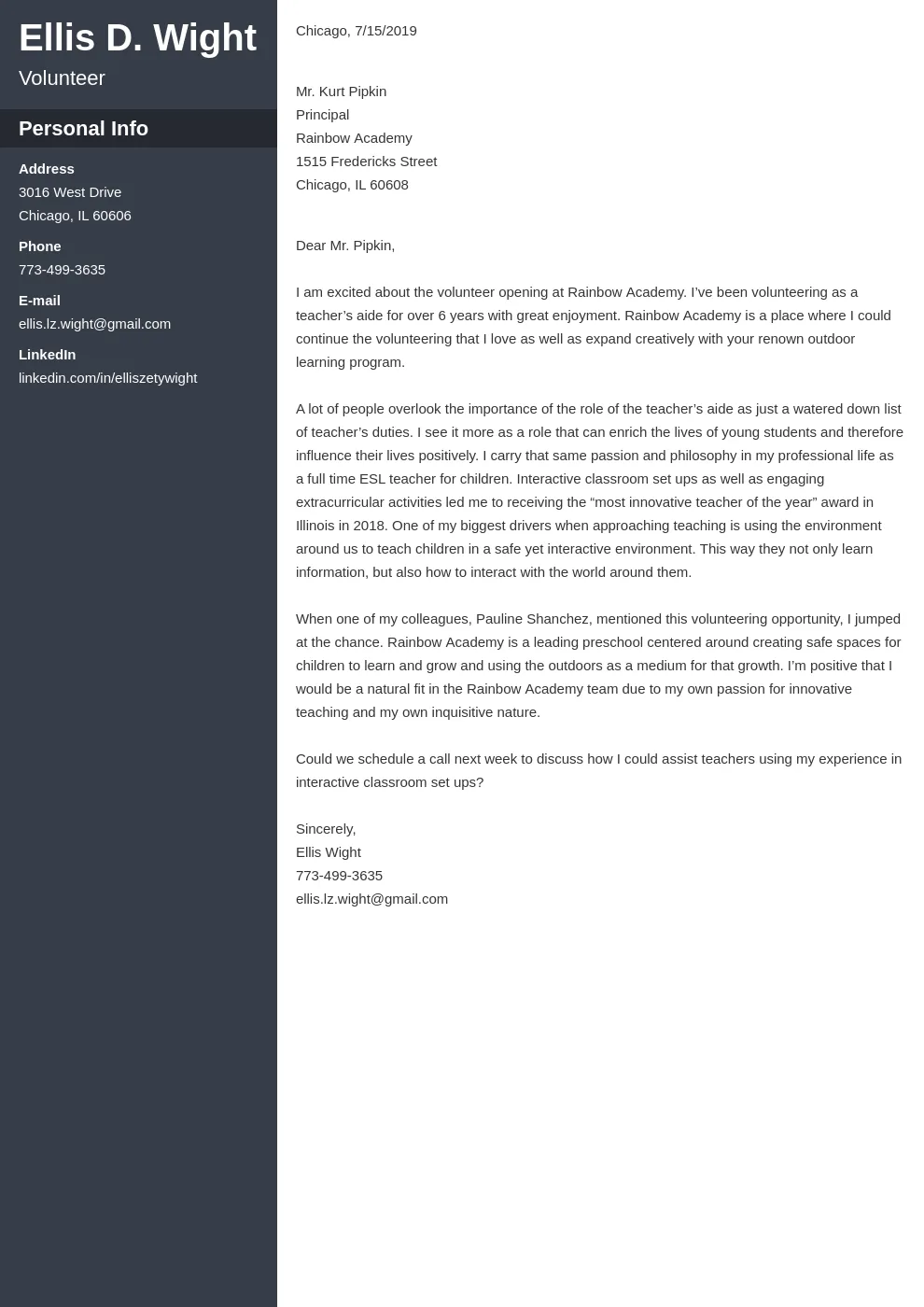
Crafting a compelling volunteer cover letter involves careful planning and execution. It’s all about making a strong first impression and highlighting your suitability for the role. The key elements include a clear header with contact information, a professional greeting, an engaging introductory paragraph, a body that highlights your skills and passion, and a concluding paragraph with a call to action. Each part of the letter contributes to building a narrative that showcases your enthusiasm, qualifications, and understanding of the organization’s mission. A well-written letter goes beyond simply listing your experience; it demonstrates your genuine interest and dedication to the volunteer opportunity.
Header and Contact Information
Begin with a professional header. Include your full name, address, phone number, and email address. This information should be neatly organized at the top of the letter. Make sure the contact details are accurate and up-to-date. This is the primary way the organization will reach you, so accuracy is essential. Consider including the date and the recipient’s name and title if you know them. If the position requires it, follow any provided instructions related to the contact information. This standard format ensures your cover letter is easily accessible and professional.
Greeting and Salutation
Start with a professional greeting. If possible, address the letter to a specific person, such as the hiring manager or volunteer coordinator. If you don’t know the name, use a general greeting like ‘Dear Volunteer Coordinator’ or ‘Dear Hiring Manager’. Avoid generic greetings like ‘To Whom It May Concern’. Tailoring the greeting makes a better impression. It shows you’ve taken the time to find out who will receive your application. This demonstrates your attention to detail and your commitment to the organization. The salutation sets the tone for the entire letter, so make sure it’s polite and professional.
Body Paragraph 1 Express Your Interest
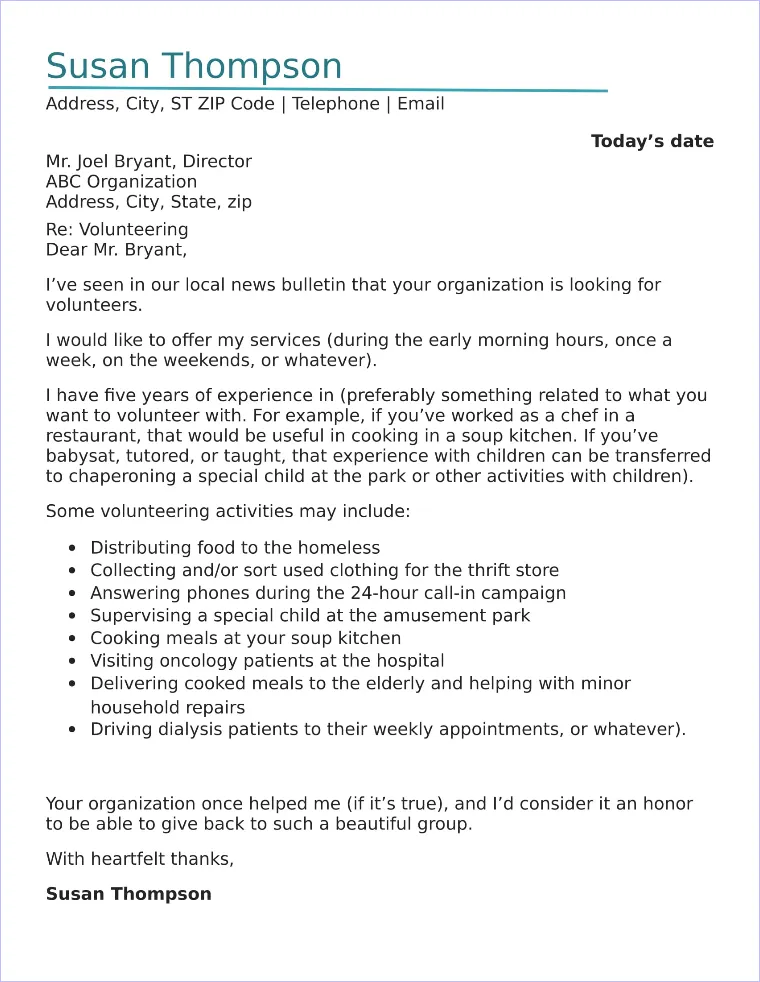
The first paragraph should clearly state your interest in the volunteer position and the organization. Briefly explain where you found the opportunity and what specifically attracted you to the role and the cause. Show your enthusiasm and genuine interest in volunteering. This is your chance to grab their attention and make them want to learn more about you. Clearly state your intention to apply for the position. Mention the name of the organization and the specific role you are applying for. Personalize the paragraph to indicate you understand the organization’s mission. This initial section should be direct, enthusiastic, and relevant to the volunteer opportunity.
Body Paragraph 2 Highlight Your Skills
The second paragraph focuses on highlighting your relevant skills and experiences. Review the job description and identify the skills and experiences the organization seeks. Provide specific examples of how you’ve demonstrated these skills in the past. Quantify your achievements whenever possible. For example, mention the number of people you’ve helped or the tasks you’ve managed. Tailor your skills to match the requirements of the volunteer position. Focus on what you can bring to the role and how your skills align with the organization’s objectives. Mentioning specific examples will make your application more persuasive and memorable.
Body Paragraph 3 Showcase Your Passion
In the final body paragraph, showcase your passion for the cause. Explain why you are motivated to volunteer and how you connect with the organization’s mission. Demonstrate your understanding of the organization’s values and how you can contribute to its goals. Share any personal experiences or insights that drive your desire to volunteer. This section should be personal and authentic. Use this section to create an emotional connection with the reader, demonstrating your commitment and dedication. By showing your passion, you make yourself stand out and show you are enthusiastic about the organization.
Formatting Your Volunteer Cover Letter
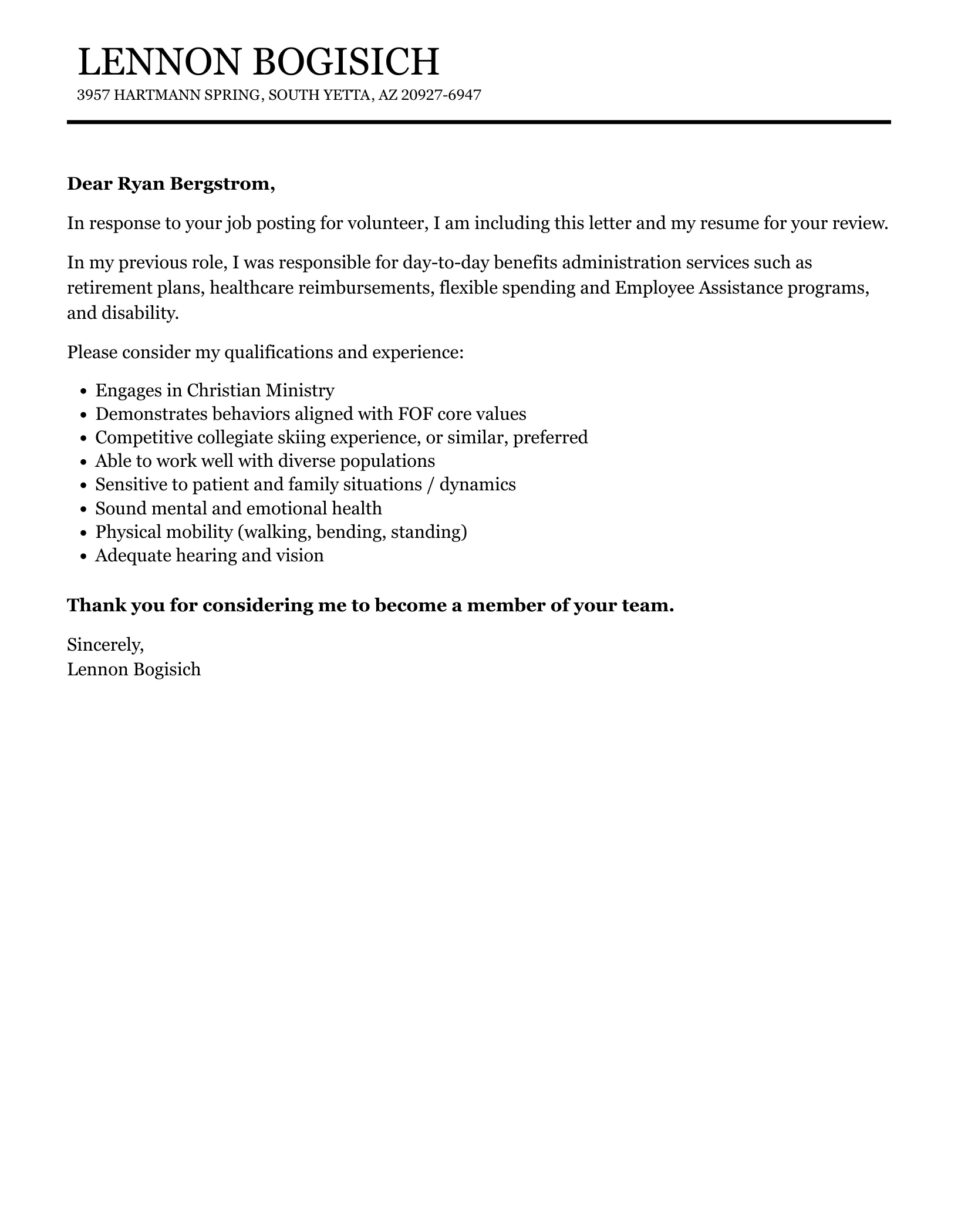
Formatting your volunteer cover letter appropriately is vital for making a positive impression. Clear, well-structured letters are easy to read and demonstrate attention to detail. The font choice, spacing, and overall presentation should align with professional standards. A well-formatted cover letter shows your commitment to the role and the organization. A letter that is easy to read makes it simple for the reader to get to the important information. This includes choosing the right font, maintaining a professional layout, and proofreading meticulously.
Choosing the Right Font
Choose a professional and readable font for your cover letter. Common options include Times New Roman, Arial, Calibri, or Helvetica. Ensure the font size is between 10 and 12 points for easy readability. Avoid using overly decorative or unusual fonts that can distract the reader. The goal is to present a clean, professional look. Sticking to standard fonts ensures your letter is accessible on different devices. Ensure the font is easy to read and doesn’t distract from your content.
Maintaining Professional Formatting
Maintain professional formatting throughout your cover letter. Use single spacing within paragraphs and double spacing between paragraphs. Align your text to the left and avoid justification. Keep margins at one inch on all sides. Use clear headings to organize your content. Use bullet points to highlight skills or accomplishments. Ensure the layout is neat, clean, and easy to follow. A well-formatted cover letter reflects attention to detail. Consistency in formatting enhances readability, helping the reader focus on your content.
Proofreading and Editing
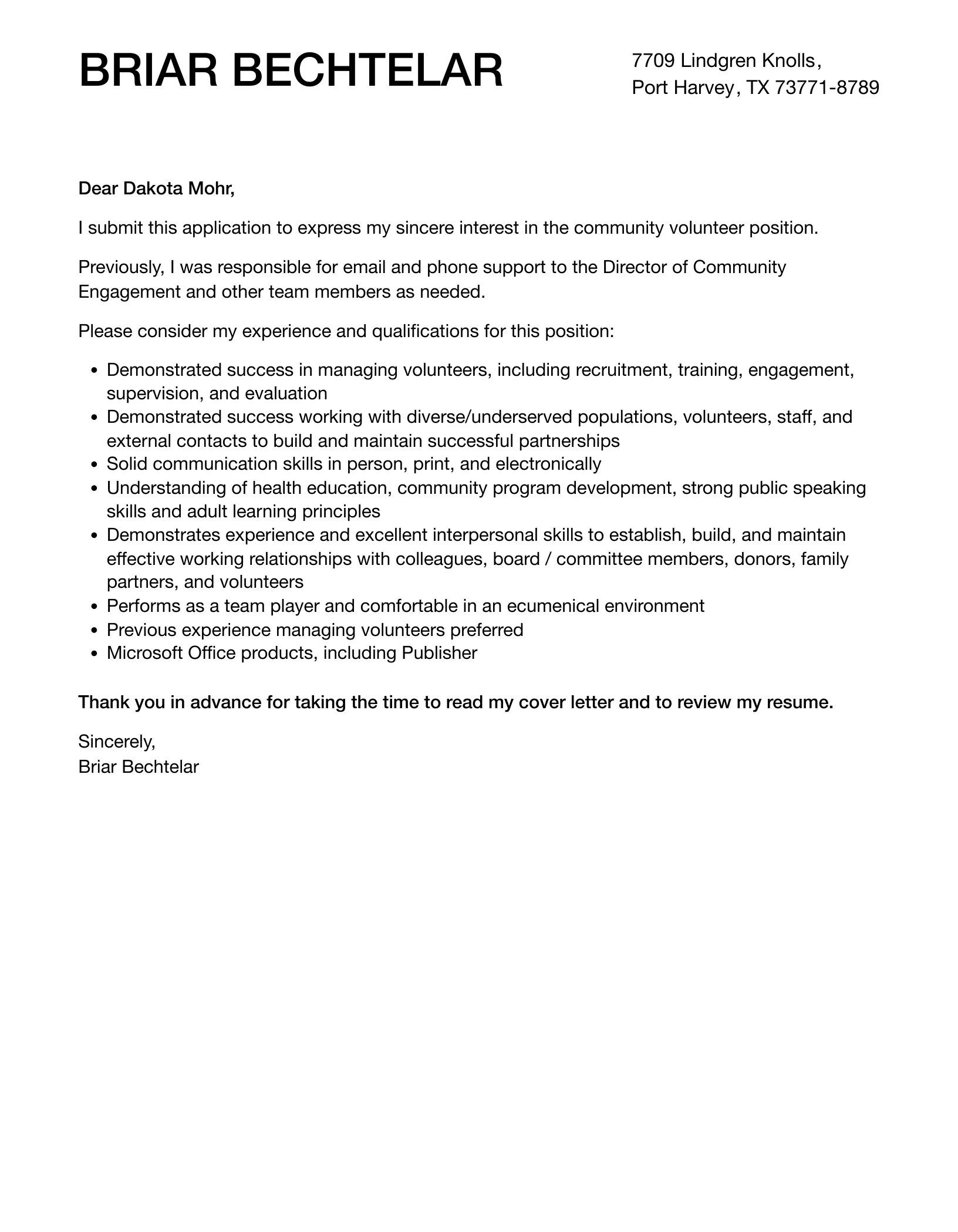
Proofread and edit your cover letter carefully before submitting it. Check for grammar, spelling, and punctuation errors. Ensure the tone is professional and appropriate for the organization. Have someone else review your letter for clarity and accuracy. Mistakes can undermine your credibility. Proofreading is a crucial step in demonstrating your professionalism. Eliminate all errors to ensure a polished, error-free document. A well-proofread letter shows your commitment to quality and attention to detail. Double-check all details to ensure your letter is the best it can be.
Volunteer Cover Letter Examples
Reviewing volunteer cover letter examples can give you valuable insights. Seeing how others have approached similar applications can inspire you to craft your own. Different examples highlight various aspects of skills, experiences, and motivations. Use the examples to get an idea of how to structure your letter, what language to use, and the tone to adopt. Keep the example in mind when you are writing your own to provide an effective cover letter. Adapt the example to fit your specific qualifications and the requirements of the organization.
Example 1 General Volunteer Position
This example suits general volunteer roles where specific skills aren’t mandatory. It emphasizes your overall interest in volunteering and your willingness to help. It should highlight your enthusiasm for the cause and your general skills. This type of letter often mentions your availability, your willingness to help, and any previous volunteer experience. It focuses on your desire to contribute and your eagerness to learn and grow. It emphasizes your dedication to the organization’s mission and your commitment to making a difference. This kind of letter is effective for positions that value flexibility and a strong work ethic.
Example 2 Specific Organization Focus
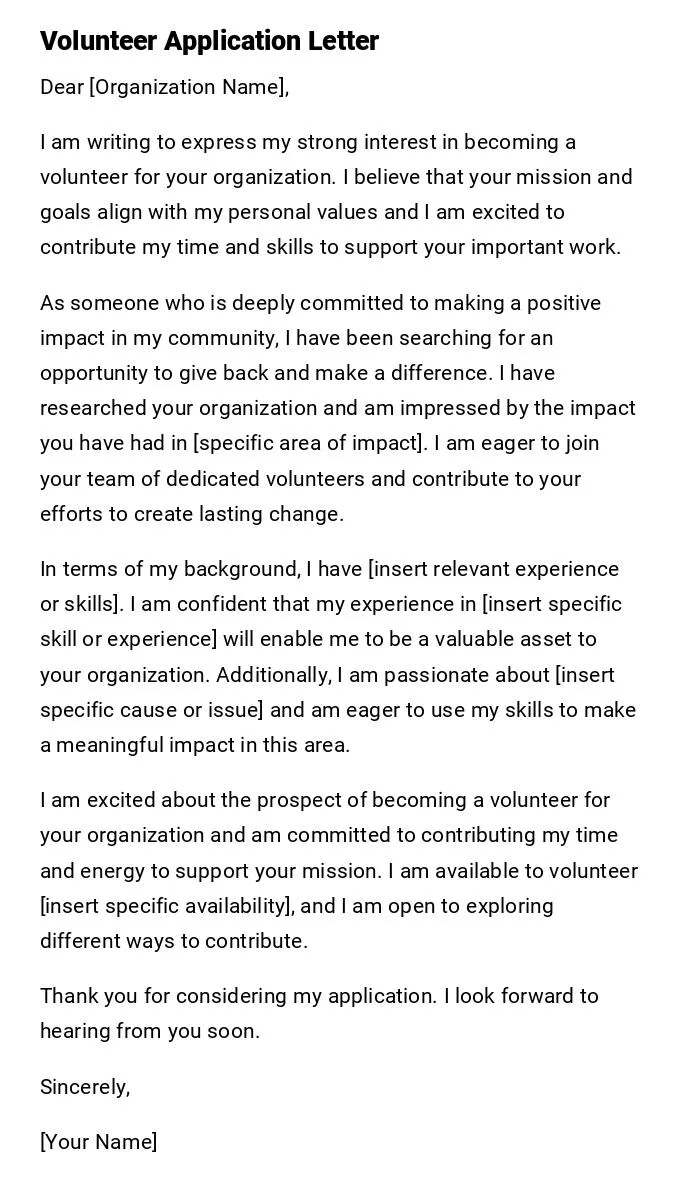
This example targets a specific organization or role with defined requirements. It showcases your skills and experiences that match the job description. The letter should show your thorough understanding of the organization’s goals. The letter should describe how your skills fit the role and showcase your passion for the cause. Emphasize specific skills and achievements relevant to the organization’s mission. This approach increases your chances of getting an interview. Make sure to personalize your letter and show the reader why you are the best fit for this role. Mentioning specific projects and initiatives will help you stand out and show your potential.
Tips for a Standout Cover Letter
A standout cover letter goes beyond basic requirements. It grabs the reader’s attention and leaves a lasting impression. It conveys your genuine interest and sets you apart from other applicants. The key is to personalize your letter, highlight your unique skills, and express your enthusiasm. This ensures you stand out and make a strong case for why you are the right fit. It’s about making sure the organization understands your commitment to the role.
Tailoring Your Letter
Always tailor your cover letter to each organization and position. Customize your letter to reflect the specific needs and requirements of the role. Use language and keywords from the job description. Personalize your letter by mentioning something specific about the organization. Research the organization’s mission, values, and recent activities. Show how your skills and experiences align with their goals. Tailoring shows you are genuinely interested in the specific opportunity and haven’t sent a generic application. This demonstrates your attention to detail and commitment.
Using Action Verbs
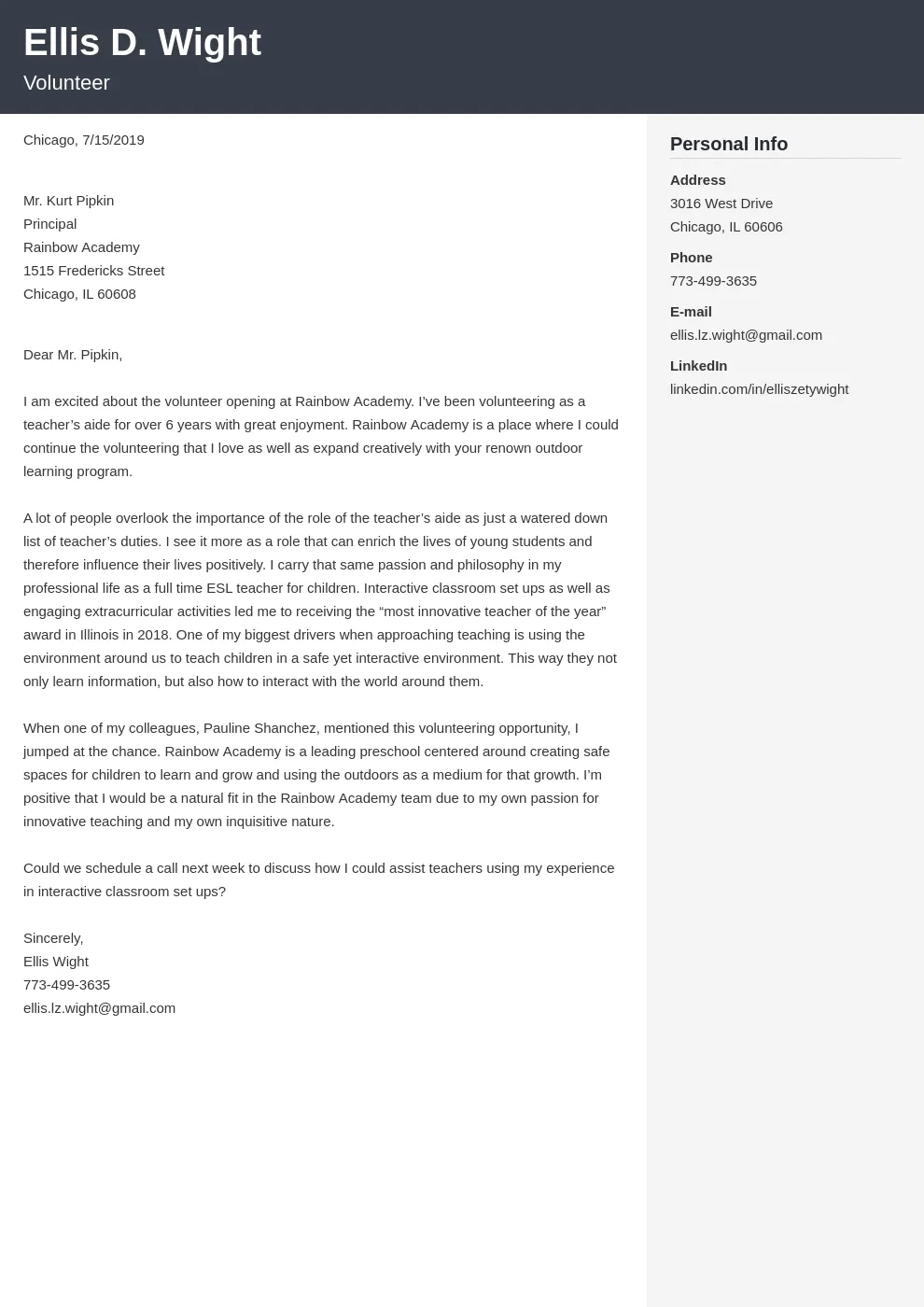
Use action verbs to describe your skills and experiences. Start sentences with verbs that demonstrate your contributions. Examples include ‘managed,’ ‘coordinated,’ ‘assisted,’ ‘created,’ and ‘developed.’ Action verbs make your accomplishments more compelling and memorable. They bring your skills to life and show what you can do. Action verbs clearly communicate your roles and show how you positively impacted previous experiences. They provide more detail and add more value than passive descriptions.
Expressing Gratitude
Express gratitude in your closing. Thank the reader for their time and consideration. Reiterate your interest in the position. Include a call to action, such as ‘I look forward to hearing from you.’ This shows your professionalism and your appreciation for the opportunity. Reiterate your enthusiasm for the role and the organization. This helps to reinforce your positive impression. By expressing gratitude, you leave a lasting positive impression. It ensures you end your letter on a positive note.
